This Fresh Basil Walnut Pesto uses walnuts in place of pine nuts, and it tastes just as delicious. This versatile sauce can add a ton of extra flavor to a variety of things like pasta dishes, salads, pizza, proteins, sandwiches, and vegetables. Making homemade pesto sauce is easy and ready in 10 minutes or less!
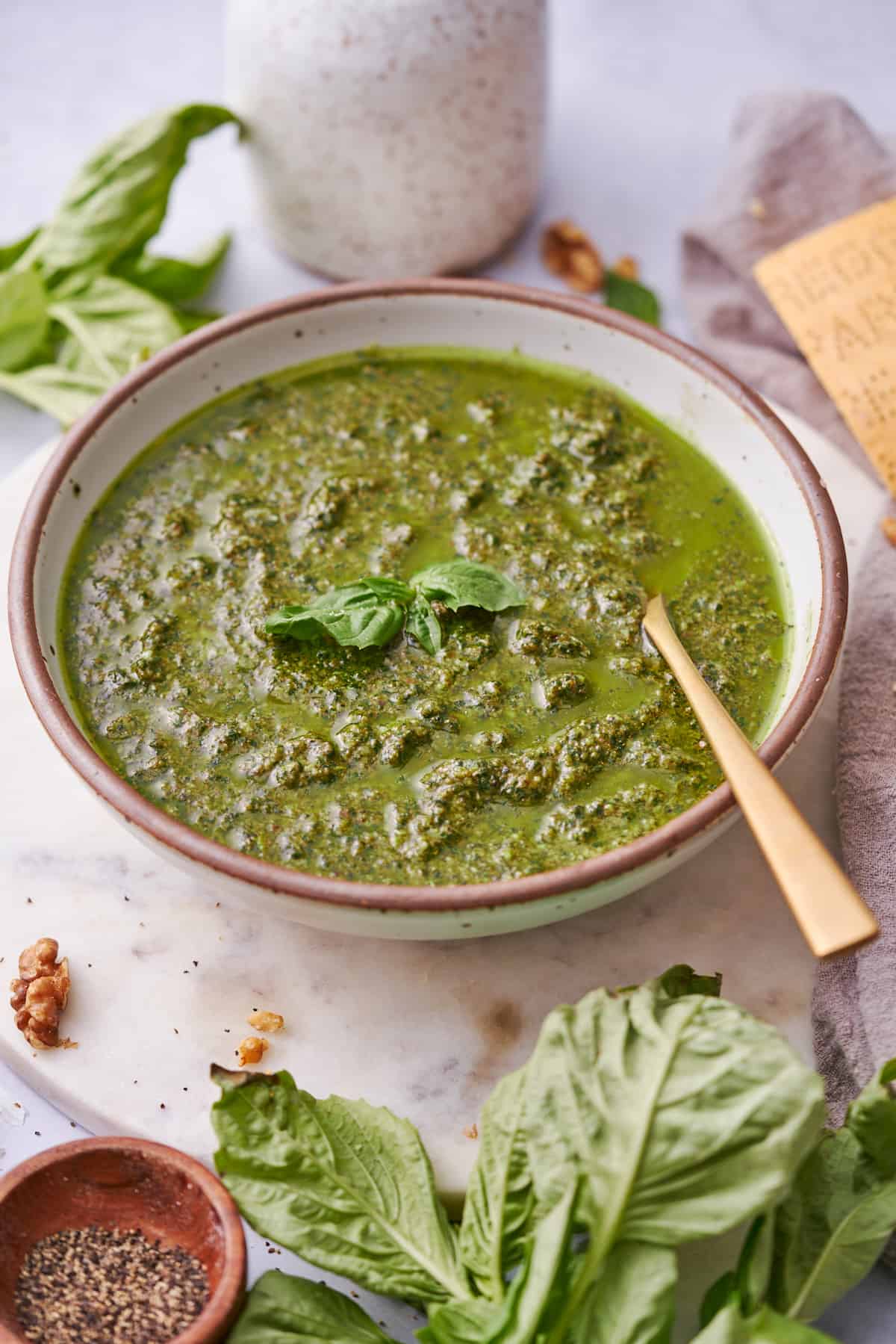
Note: This recipe was originally published in August 2020, but has been improved and re-photographed. We hope you enjoy the new look!
If you're looking for a fresh and flavorful twist on traditional pesto alla Genovese, look no further than this delicious homemade basil walnut pesto recipe. This simple walnut pesto is made with only 7 ingredients and is much more affordable than using expensive pine nuts.
Looking for ideas on how to use up leftover pesto? Try delicious pesto with this creamy pesto pasta, this pesto butter salmon, in this pesto vinaigrette dressing, this pesto cauliflower, or this chicken pesto pasta salad.
Jump to:
❤️Why we love this recipe
- A twist on classic pesto sauce - The toasted walnuts add plenty of flavor to pesto and gives it more depth.
- Simple ingredients - This recipe is made with fresh herbs and simple ingredients that you can get at any local grocery store.
- Versatile - Pesto is an excellent addition to sandwiches, your favorite pasta, and proteins. It's also great as a dipping sauce and a spread!
- Bright green color - Pesto comes out as beautiful green sauce that makes any dish delicious and a visual treat!
🌿Ingredients
Here are the ingredients we used for this recipe. You can find more information for substitutions below.
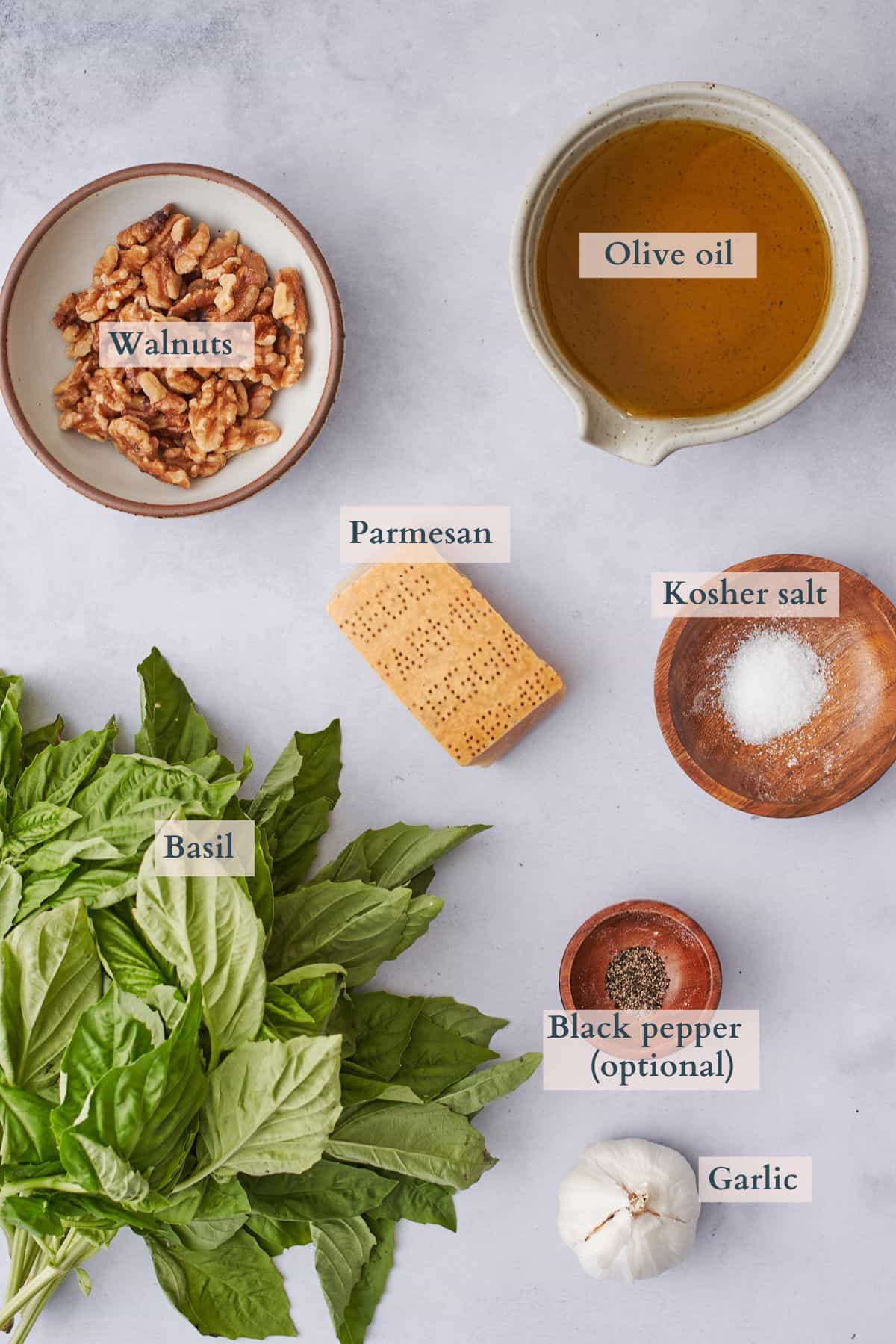
- Walnuts - We recommend toasting the walnuts for a few minutes on the stovetop or in the oven before adding them to the pesto for the best flavor.
- Garlic cloves
- Kosher salt
- Black pepper - Now this is NOT a traditional pesto ingredient, but we like to add a pinch. Completely optional.
- Fresh basil leaves - Sweet Italian basil. Look for leaves with no blemishes.
- Parmigiano Reggiano - Freshly grated. This is a traditional ingredient and adds a ton of flavor.
- Extra virgin olive oil- Use something high quality for the best flavor!
Visit the recipe card for the full quantities and nutritional information.
✨Substitutions & variations
Here are a few suggestions on additional flavors to try, or simple variations to this recipe.
- Swap the nuts. Swap walnuts with pine nuts, almonds, pistachios, or sunflower seeds.
- Spicy. For a spicy kick, add Calabrian chilis (affiliate link) or red pepper flakes.
- Sweet. For a sweet element, add maple syrup or honey to this recipe.
- Dairy free or vegan. Swap parmesan for vegan parmesan.
- Citrusy. Add fresh lemon juice and zest for a bit of a citrusy flavor.
🔪Prep work
- Peel garlic, and chop it roughly into chunks.
- Grate parmesan cheese.
- Pick the basil leaves from the stems.
- Measure out all ingredients.
📋Instructions
Step 1 is optional, but highly recommended for the best flavor! If you don't want to toast the walnuts, skip to step 2.
In a pan over medium heat, toast the walnuts, stirring constantly until lightly browned and a nutty aroma is apparent. Take care to watch carefully, as burnt walnuts will give the pesto a bitter taste. (Image 1)
Remove immediately and add to the food processor, along with the garlic and a pinch of salt. (Image 2)
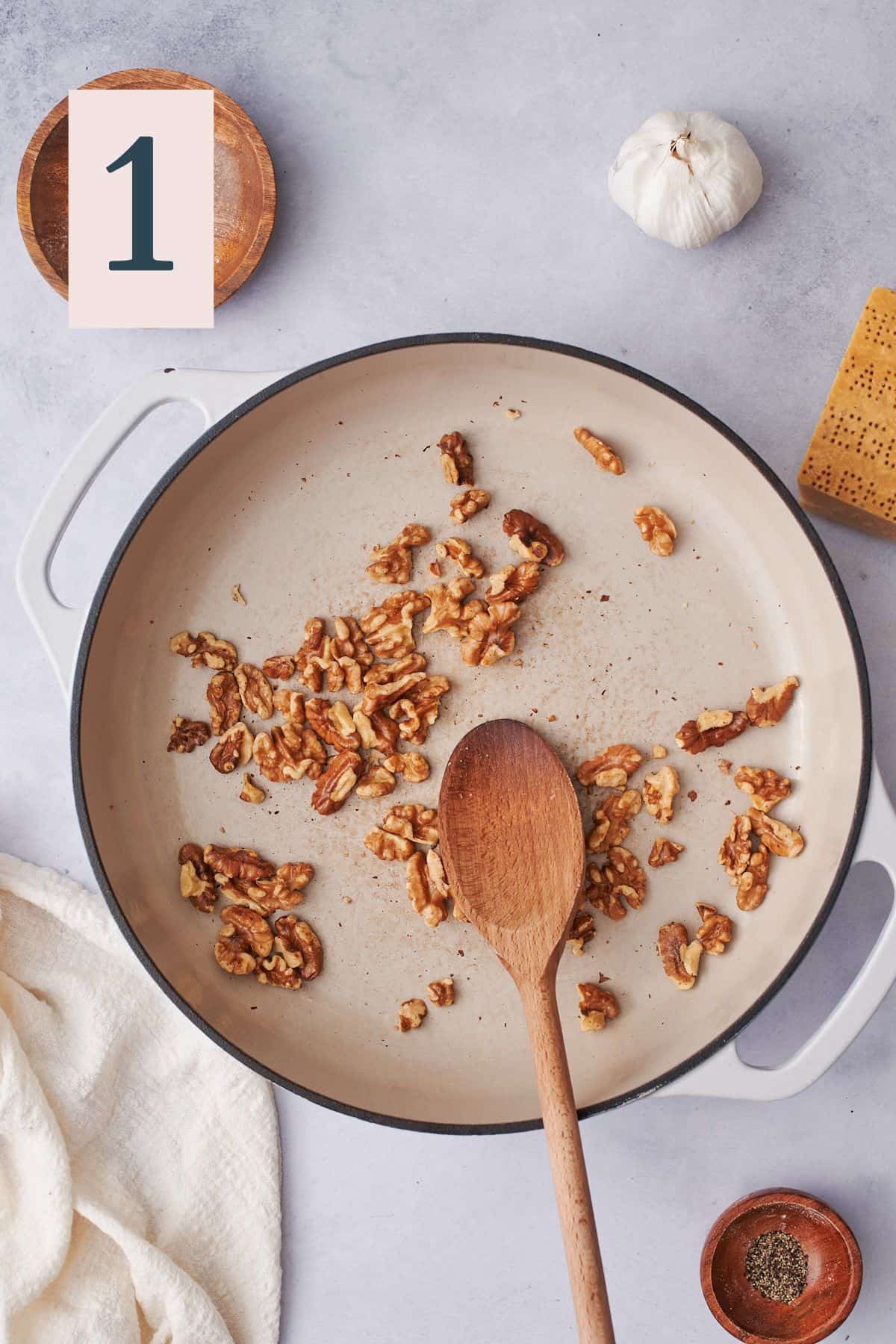
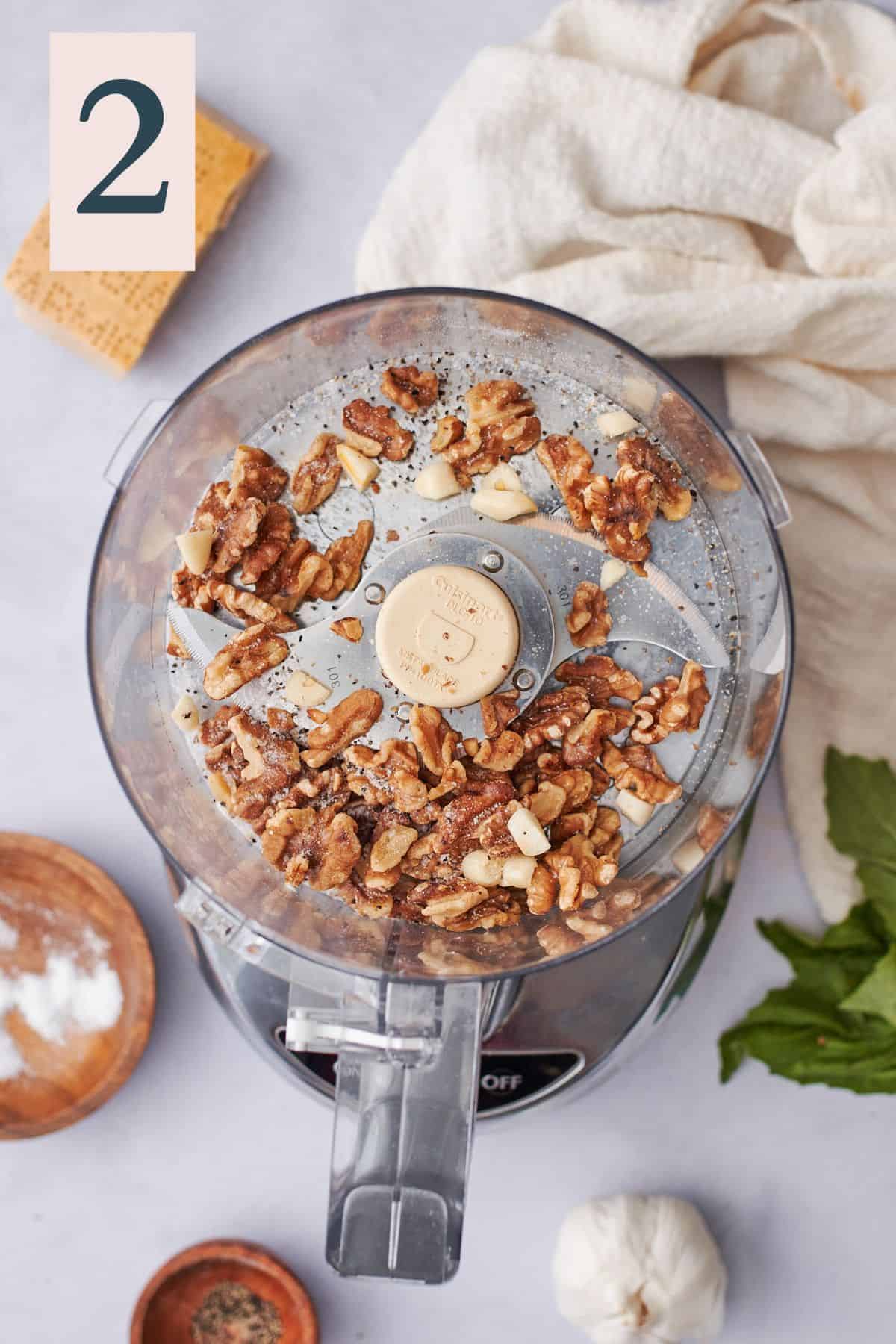
Food process until coarsely chopped. (Image 3)
Add in the basil with kosher salt and the optional black pepper. (Image 4)
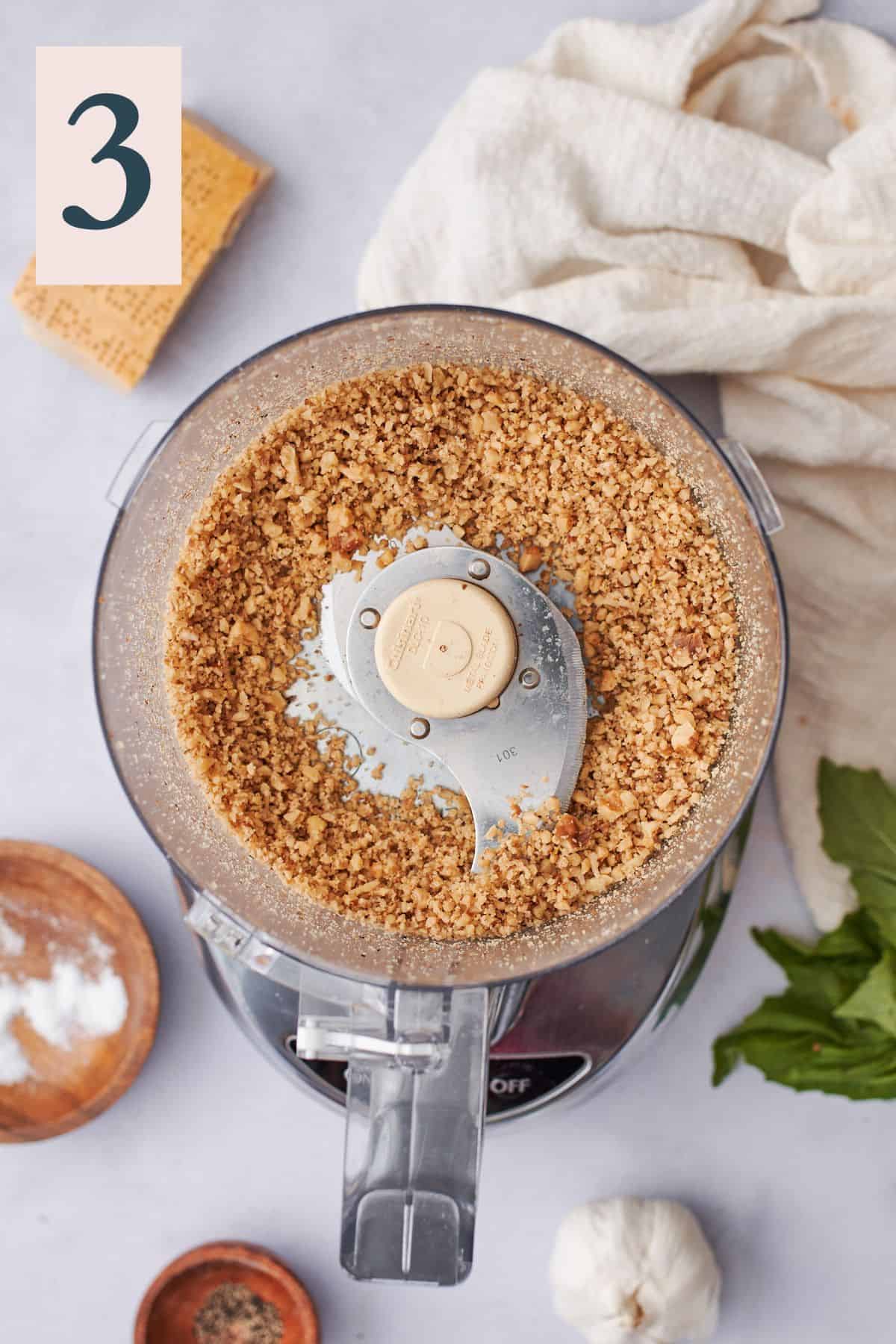
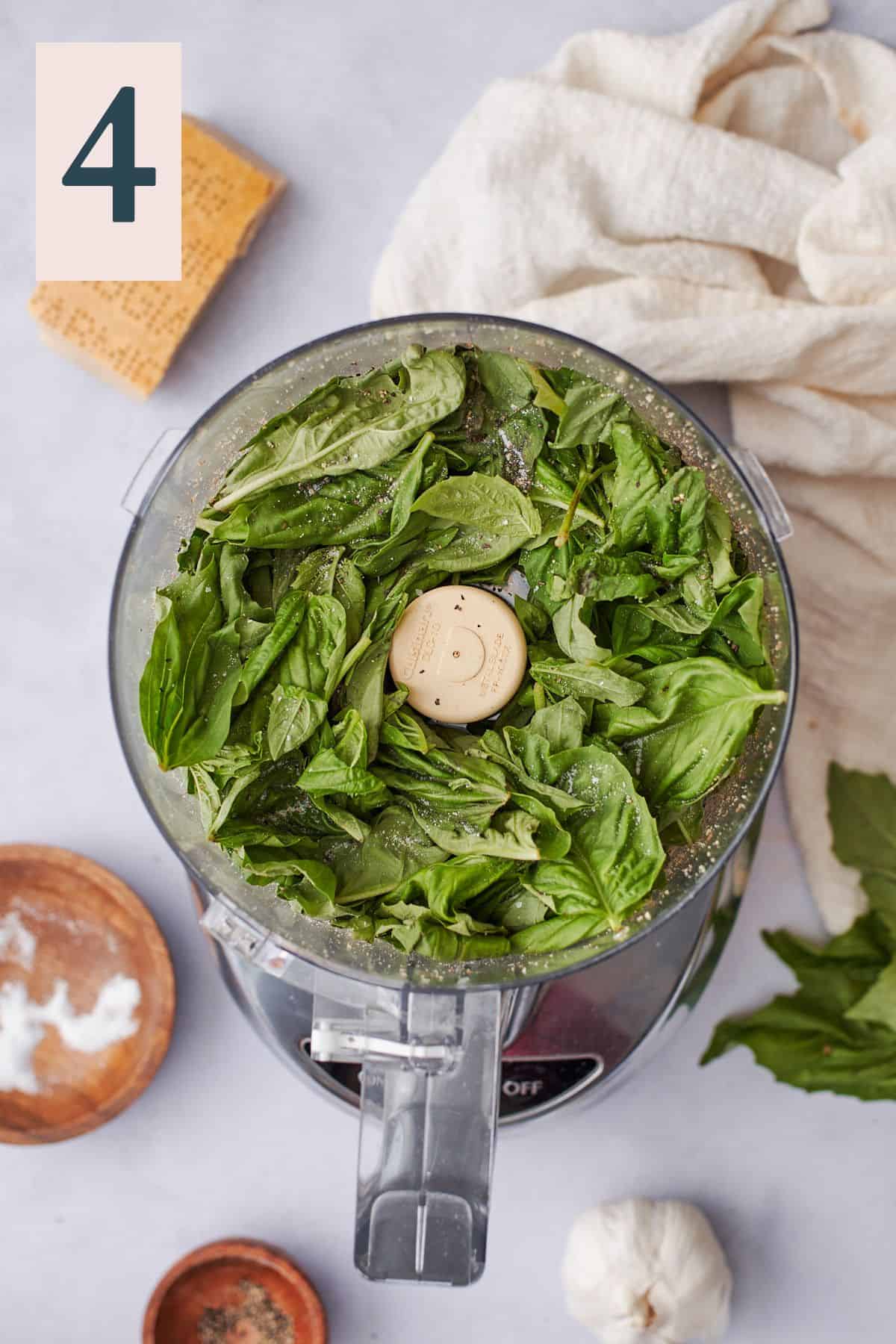
PULSE slowly, do not process until finely chopped. This helps to avoid bruising the basil too much. (Image 5)
Attach the feed tube to the food processor. With the processor running, slowly pour a steady stream of olive oil. (Image 6)
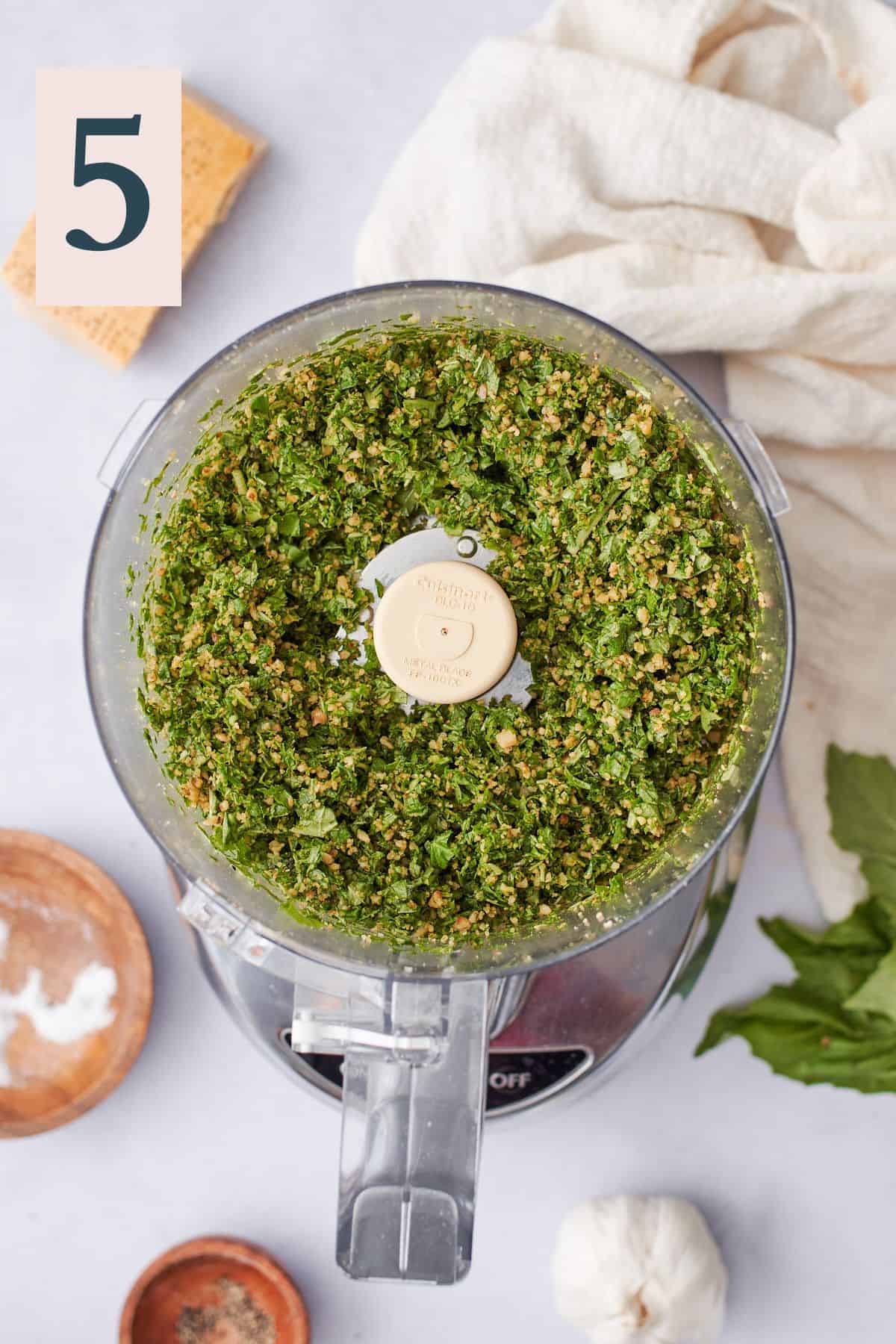
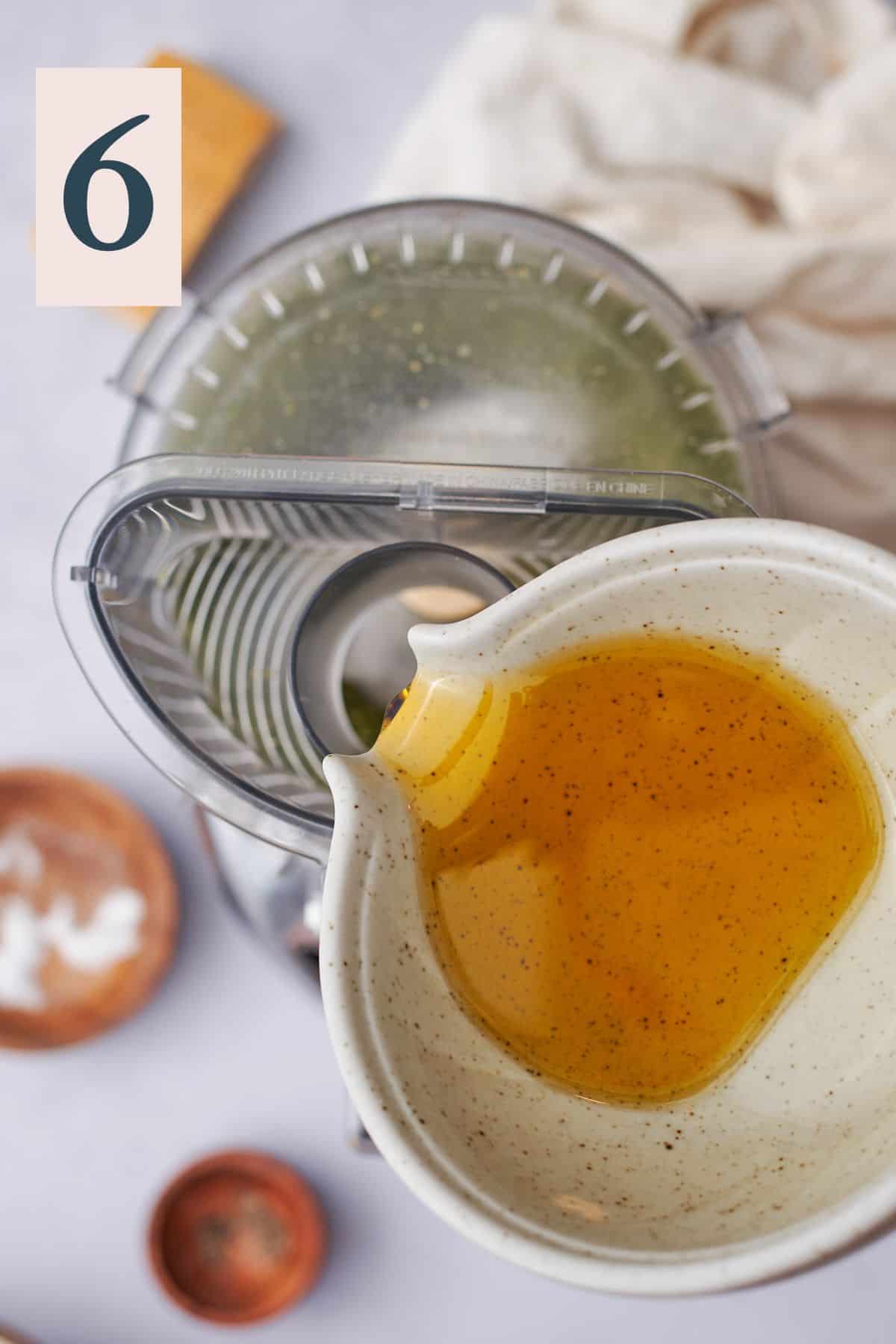
At this point, the pesto should be a nice medium consistency with a thin layer of olive oil on top. If it is too thick, add more olive oil while processing until desired consistency is reached. (Image 7)
Pour the grated parmesan cheese in and process. (Image 8)
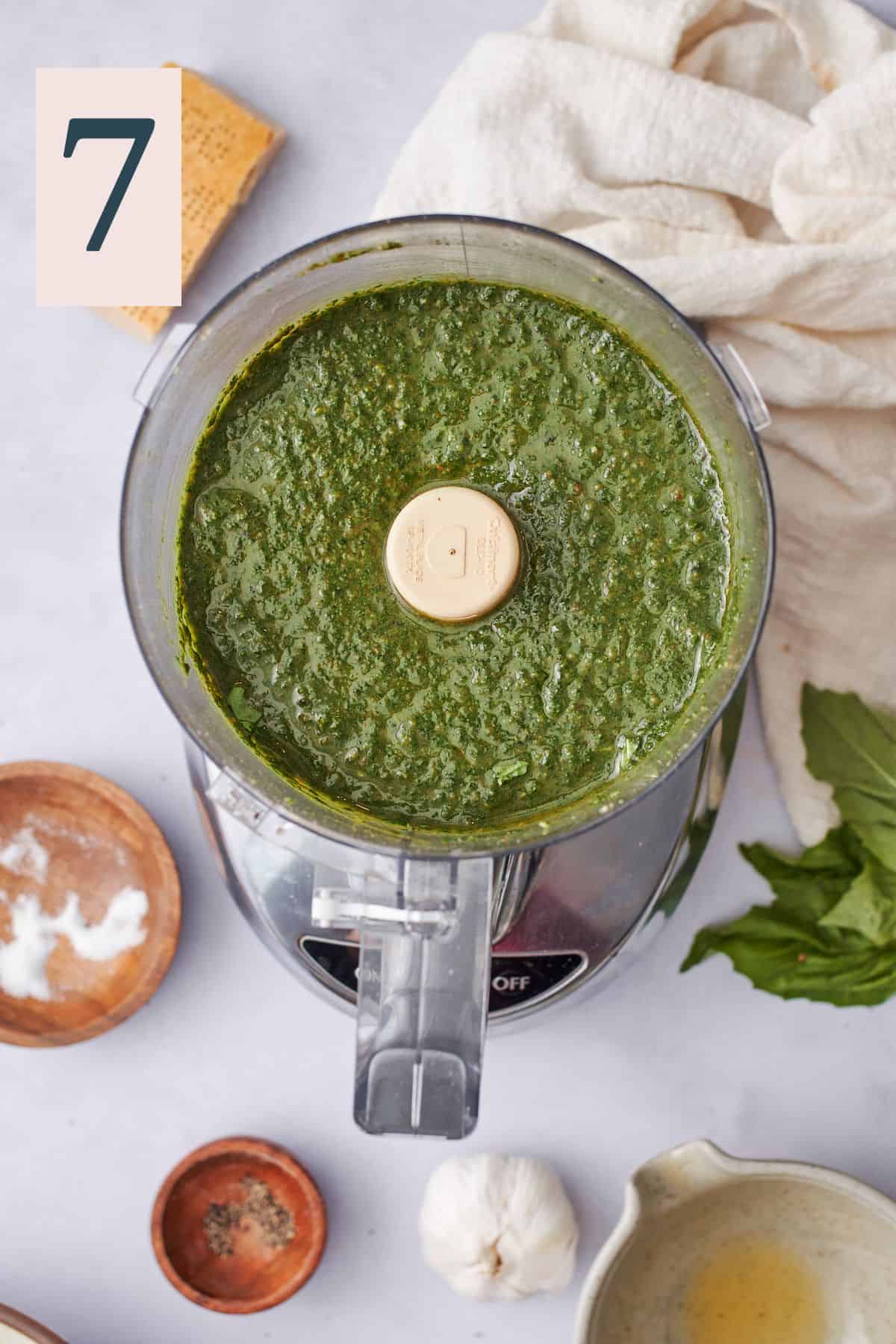
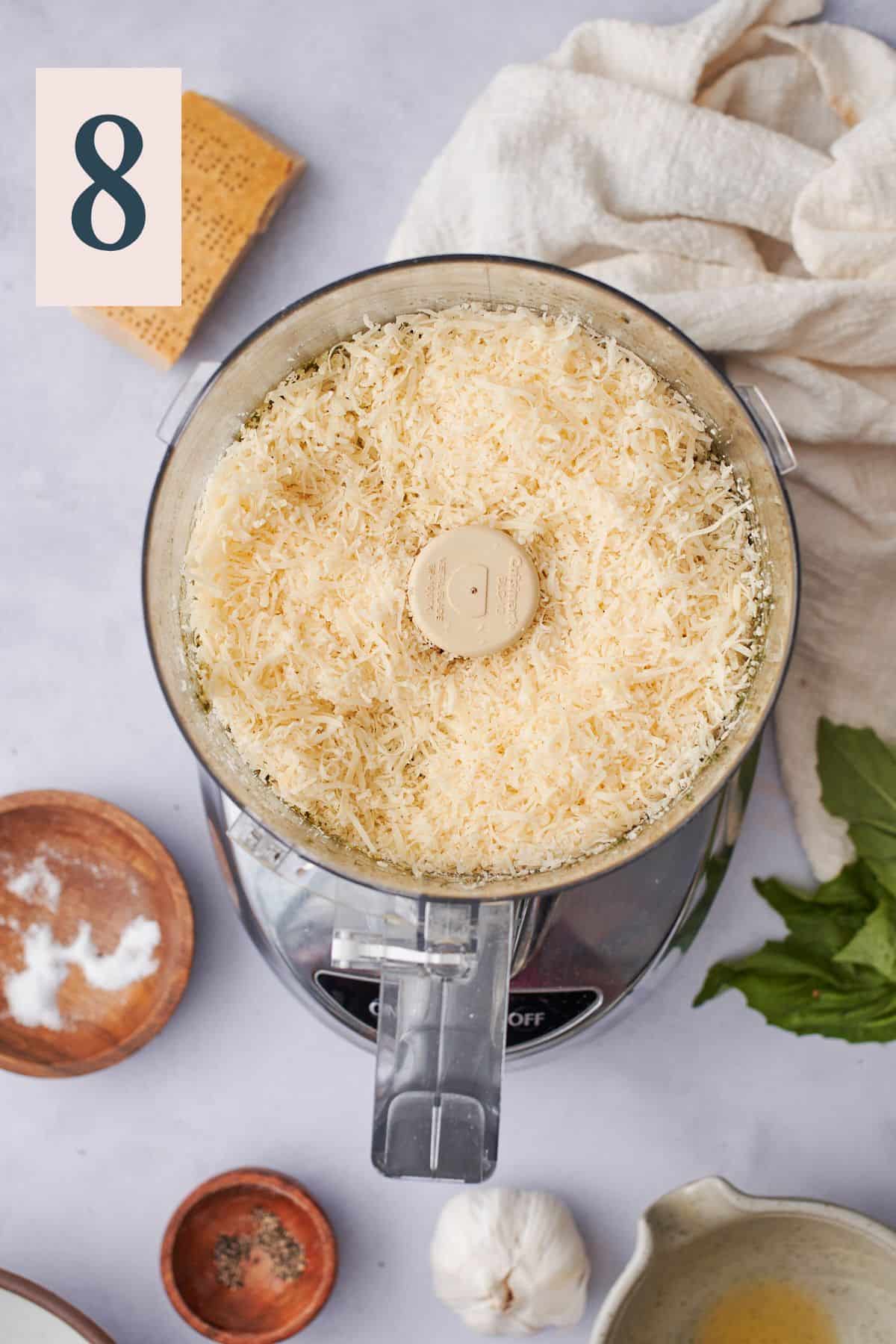
Taste test the pesto, adjust seasonings if needed and add olive oil to thin if desired. Enjoy!
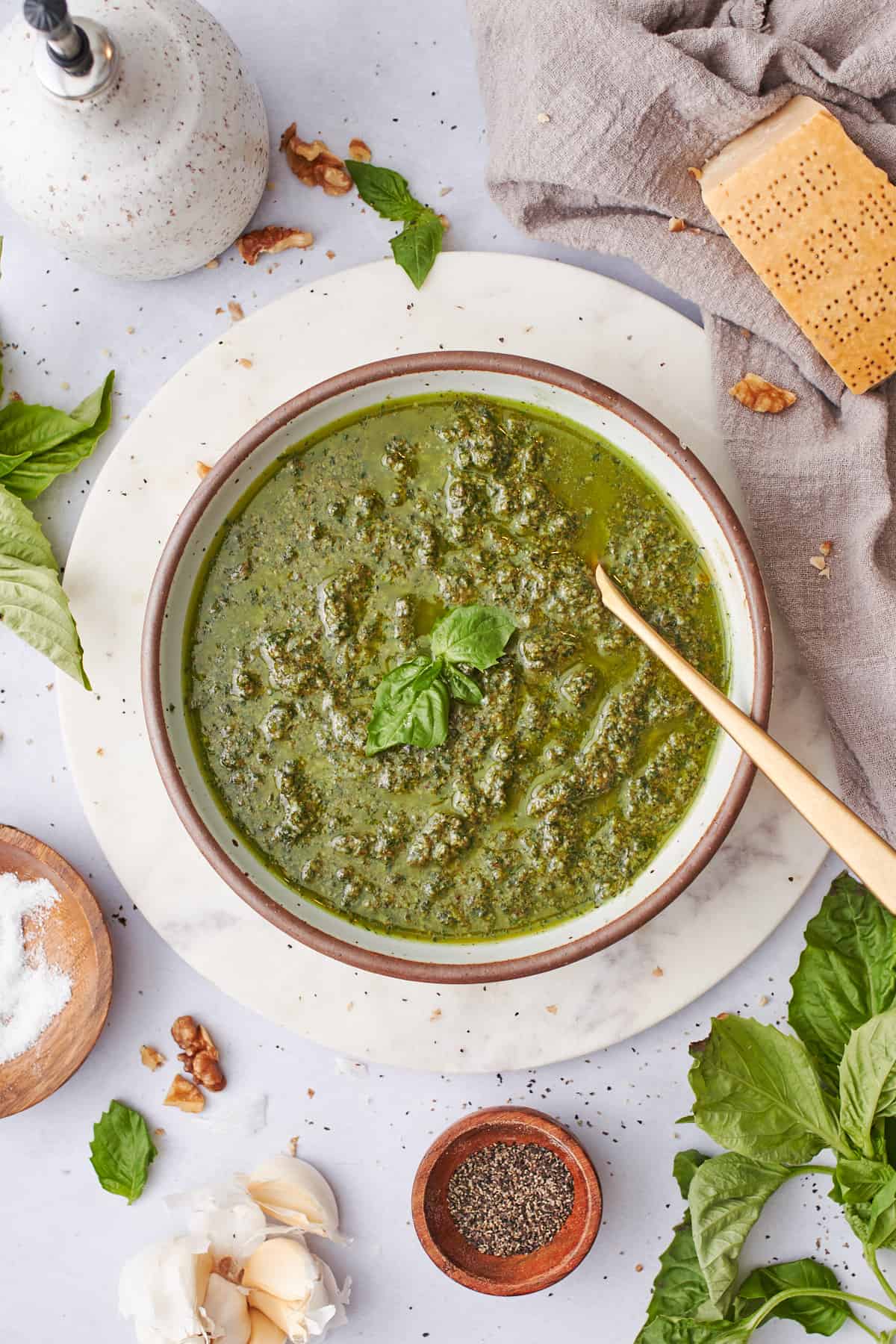
✨Tips & tricks
- Don't overprocess the pesto. If the pesto is overprocessed, it will turn into an oily, smooth paste. Blend it well, but retain some texture by taking time and pulsing near the end.
- Add the olive oil slowly. Take time to slowly add the olive oil until it reaches your desired consistency.
- Use high quality ingredients. Using high quality basil, parmesan cheese, and olive oil will make all the difference in the taste!
Need supplies? Shop our Amazon store! Stock your pantry, and find all of our favorite kitchen tools! A Full Living LLC earns a small commission through purchases on our storefront to help support this site.
💭Frequently Asked Questions
You can store this pesto in an air-tight container in the fridge for up to a week.
Cover the top with a generous layer of oil, to prevent air from reaching the pesto. This helps slow bacteria growth, as well as keeps the color bright green!
Yes, pesto can be frozen, but we do recommend leaving out the parmesan cheese for best results.
To freeze, make pesto cubes by freezing the pesto in an ice cube tray and then transferring them to a freezer bag. Store in the freezer for up to 3 months and use as needed.
Oxidization will occur when the pesto comes into contact with air, this is normal. To prevent discoloration, make sure to cover the pesto with a thick layer of olive oil when storing it in the fridge.
You can also add a squeeze of lemon juice to help prevent the basil from turning a brownish color.
If you want to take it a step further, you can blanch the basil leaves before preparing your pesto to prevent any discoloration.
🍴Dishes to serve with pesto
Not sure what to serve with pesto? Here are a few suggestions!
- Lemon herb chicken
- Burrata salad
- Air fryer steak tips
- Air fryer fingerling potatoes
- Cold asparagus salad
- Air fryer waffle fries
More Recipes To Consider
Did you try this recipe? Make sure to leave a 5-star review below! 🌟 This helps other readers find our recipes and encourages them to try them. Also, be sure to leave a comment with your experience. Follow along, and tag @AFullLiving on Instagram with your photos!
📖 Recipe
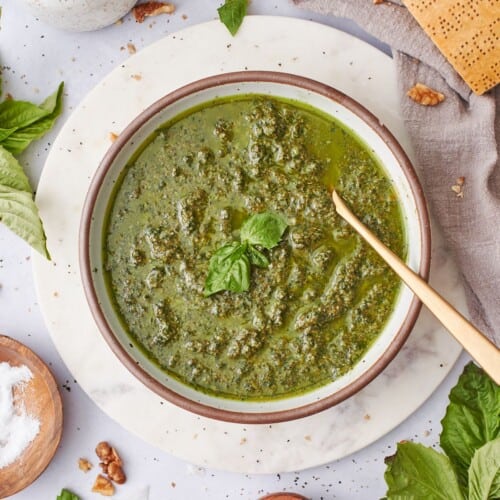
Walnut Pesto Recipe
Equipment
- Large food processor (9 cup capacity or larger)
Ingredients
- 3 ounces fresh basil leaves
- ⅔ cup walnuts (75 grams)
- 1 cup olive oil (choose something high quality)
- 4 ounces parmesan cheese, freshly grated
- 2 cloves fresh garlic, rough chopped
- ½ - ¾ teaspoon kosher salt (to taste)
- ¼ teaspoon black pepper (optional)
Instructions
- Toasting the walnuts is optional, but highly recommended for the best flavor! In a pan over medium heat, toast the walnuts, stirring constantly until lightly browned and a nutty aroma is apparent. Take care to watch carefully, as burnt walnuts will give the pesto a bitter taste.
- Remove immediately and add to the food processor, along with the garlic and a pinch of salt. Food process until coarsely chopped. Add in the basil with kosher salt and the optional black pepper.
- PULSE slowly, do not process until finely chopped. This helps to avoid bruising the basil too much.
- Attach the feed tube to the food processor. With the processor running, slowly pour a steady stream of olive oil. At this point, the pesto should be a nice medium consistency with a thin layer of olive oil on top. If it is too thick, add more olive oil while processing until desired consistency is reached. Pour the grated parmesan cheese in and process again.
- Taste test the pesto, adjust seasonings if needed and add olive oil to thin if desired. Enjoy!
- You can store this pesto in an air-tight container in the fridge for up to a week. Cover the top with a generous layer of oil, to prevent air from reaching the pesto. This helps slow bacteria growth, as well as keeps the color bright green!
Notes
- Don't overprocess the pesto. If the pesto is overprocessed, it will turn into an oily, smooth paste. Blend it well, but retain some texture by taking time and pulsing near the end.
- Add the olive oil slowly. Take time to slowly add the olive oil until it reaches your desired consistency.
- Use high quality ingredients. Using high quality basil, parmesan cheese, and olive oil will make all the difference in the taste!
- How to freeze pesto: We recommend leaving out the parmesan cheese for the best results. To freeze, make pesto cubes by freezing the pesto in an ice cube tray and then transferring them to a freezer bag. Store in the freezer for up to 3 months and use as needed.
- How to keep pesto from turning brown: Oxidization will occur when the pesto comes into contact with air, this is normal. To prevent discoloration, make sure to cover the pesto with a thick layer of olive oil when storing it in the fridge.
You can also add a squeeze of lemon juice to help prevent the basil from turning a brownish color. If you want to take it a step further, you can blanch the basil leaves before preparing your pesto to prevent any discoloration.

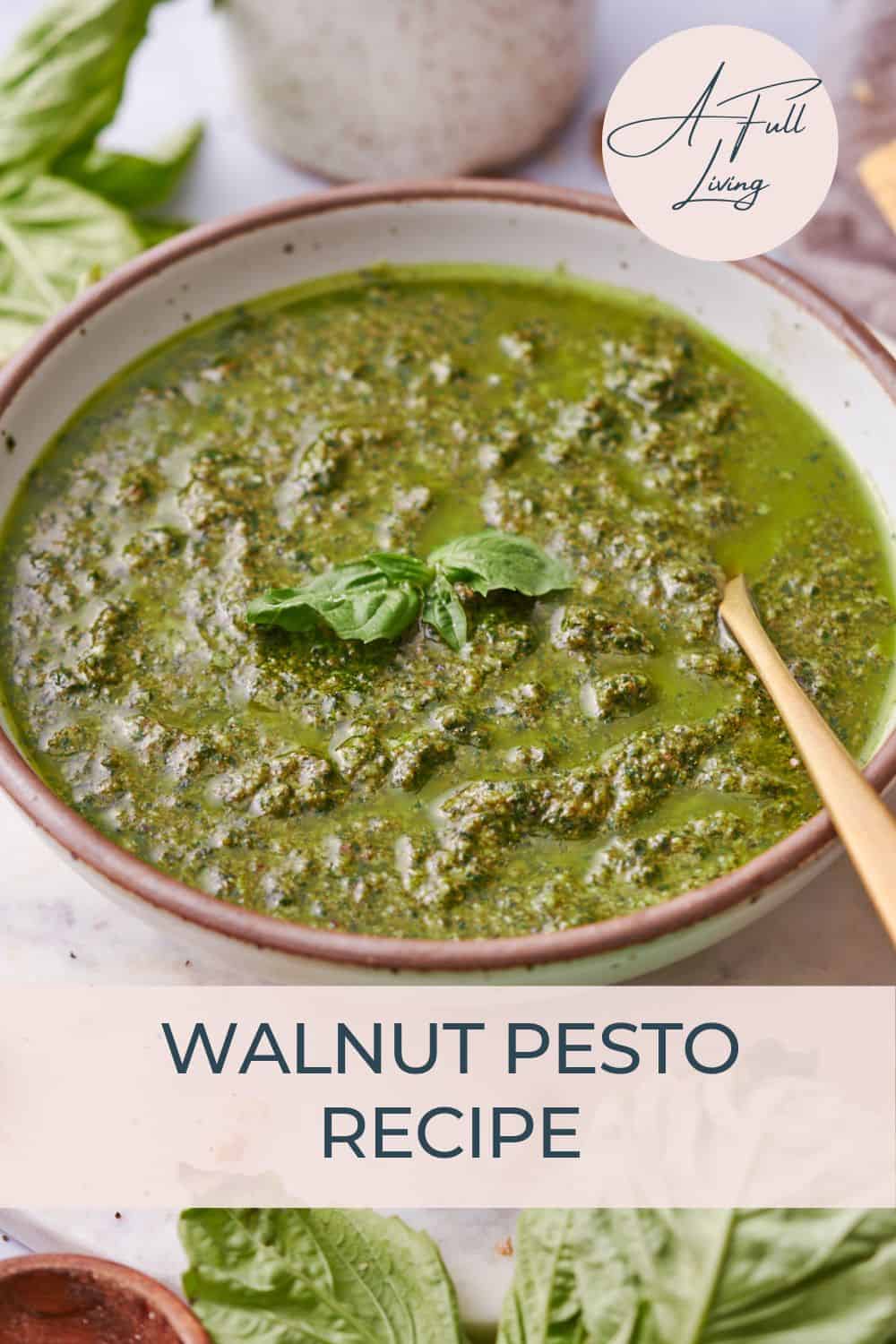
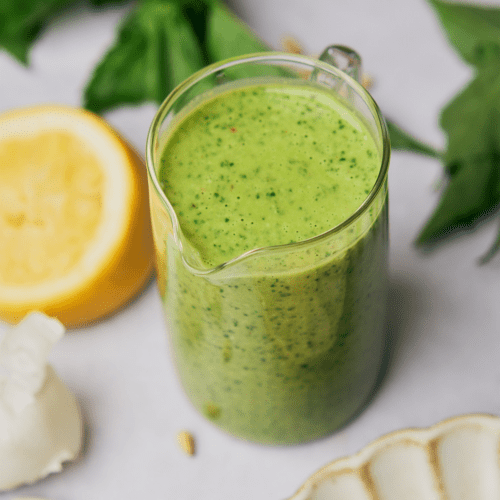

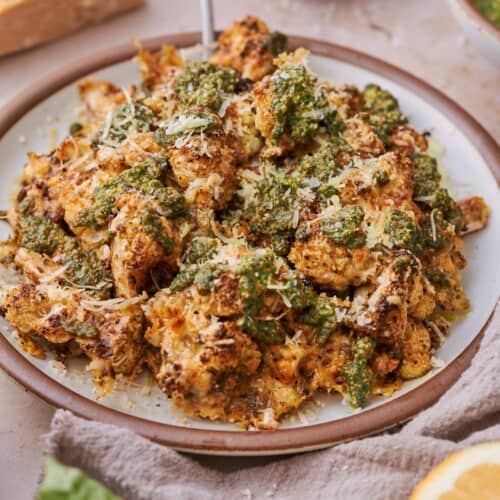
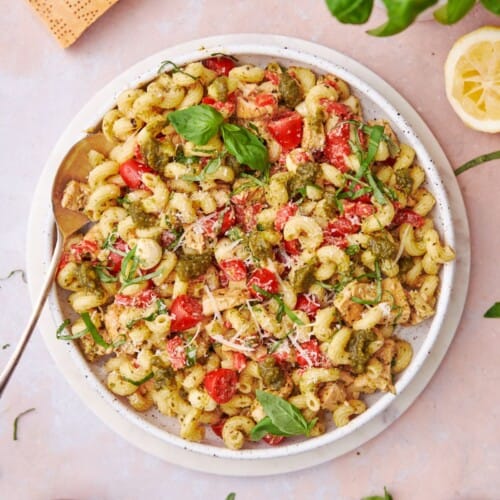
Comments
No Comments